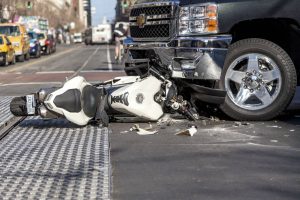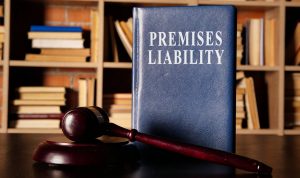
The National Highway Traffic Safety Administration reports that the frequency of traffic fatalities is three times greater at night. Even though only 25% of all driving occurs at night, it accounts for more than 50% of all traffic deaths. During the fall and winter, it gets dark earlier, and the weather can be treacherous. In addition, there are generally more large commercial trucks transporting and delivering goods in anticipation of the holiday season. Driving at night between October and February can be more dangerous than at other times of the year.
The dangers associated with night driving and large trucks are present all year round. Here are some of the issues to consider when driving at night around large commercial vehicles.
- Blind Spots
The drivers of tractor-trailer trucks typically have reduced visibility due to blind spots. The primary blind spots are along the right front quarter, at the left rear corner, and directly behind the vehicle. If you are unable to see the driver’s side-view mirror on a semi-truck, you are likely in one of their blind spots.
- Right Turns
A vehicle’s rear wheels have a shorter path, making them more likely to hit curbs during turns. Large trucks need a wider distance to execute a turn. Therefore, you often see tractor-trailer drivers swerve to the left before turning right. You should avoid passing trucks on the right when approaching intersections to prevent yourself from getting caught between the truck and a curb.
- Passing
Don’t pass a truck while it is backing up. The driver may be unable to see you. Pass trucks on the left-hand side and remember to maintain your speed. Make sure you allow adequate space between yourself and the tractor-trailer before changing lanes back in front of a truck, since trucks require a lot of distance to slow down.
- Mirrors
Make sure your mirrors are properly positioned to minimize blind spots. From the driver’s seat, you should have some visibility of the left rear corner of the car. Be sure to keep your exterior mirrors clean so they don’t obstruct your vision.
- Oncoming Car Headlights
Avoid staring directly into the headlights of oncoming vehicles. Adjust your rear-view mirror to dim the bright headlights of vehicles approaching you from the rear.
Immediately After an Accident
Stay at the scene. Stop your vehicle as soon as you can do so safely. Every state requires drivers to stop after an accident if it’s safe to do so. Fleeing the scene of an accident could lead to criminal charges, even if the accident wasn’t your fault.
Pull over to safety. If it’s possible, pull your vehicle off the road to a safe place. If other cars can, they should also be moved to the side of the road.
Turn off your car. Be sure that every vehicle involved in the accident has been turned off. This will help to reduce any potential risks from fire.
Take stock. Your adrenaline is likely pumping. Take a minute to calm yourself after the shock of the accident. Calming down will help you get your thoughts together.
Check for injuries. Injuries are your first concern for yourself, passengers, and then anyone else involved in the accident. Even if there are only minor injuries, make a note, as people may try to claim them later.
Call us Today for a Case Evaluation
If you have been injured in an accident involving a large truck at night, you may be entitled to compensation. For a consultation with an experienced truck accident attorney, call The Valenzuela Law Firm, PC today or contact us online.





